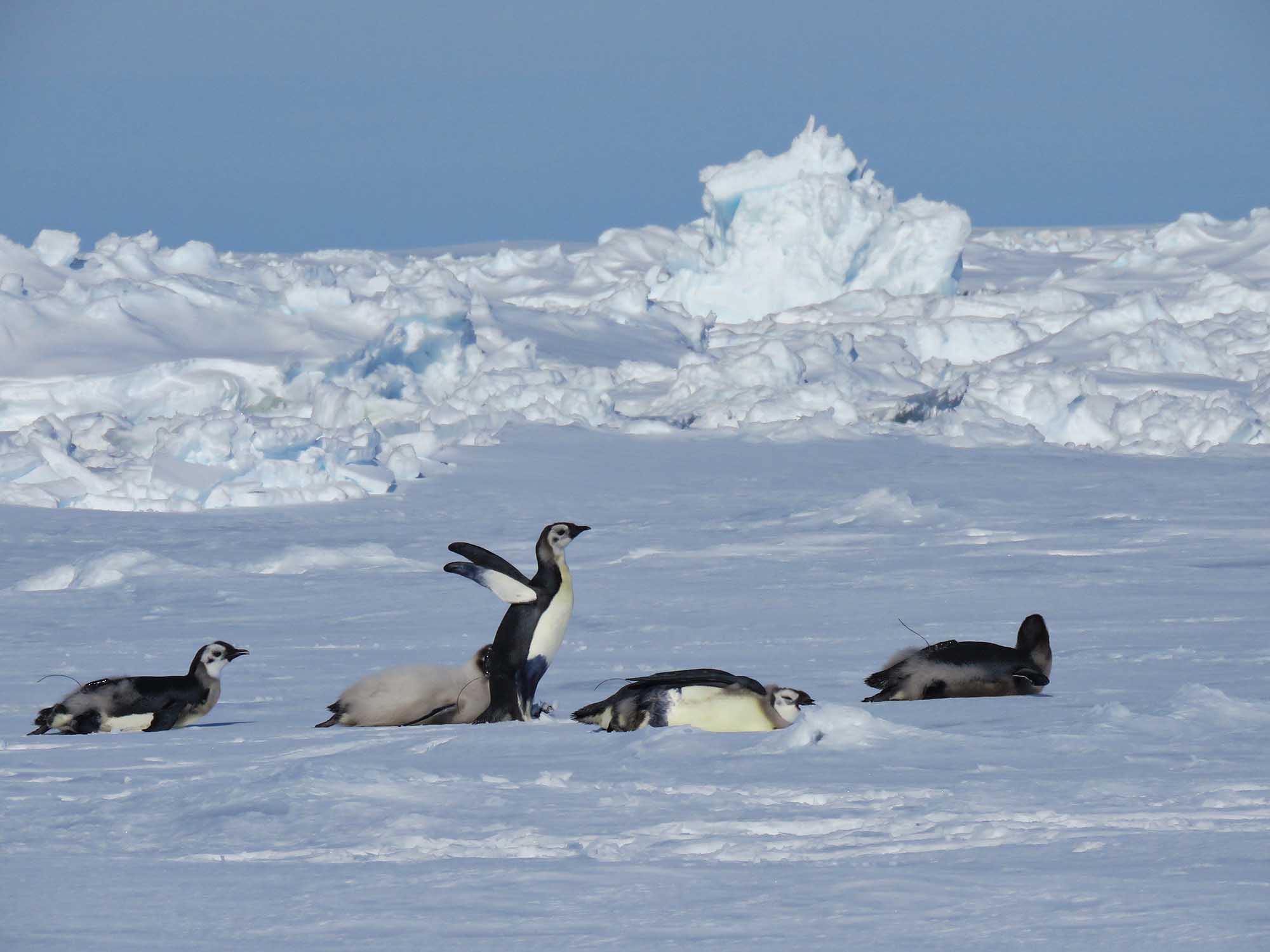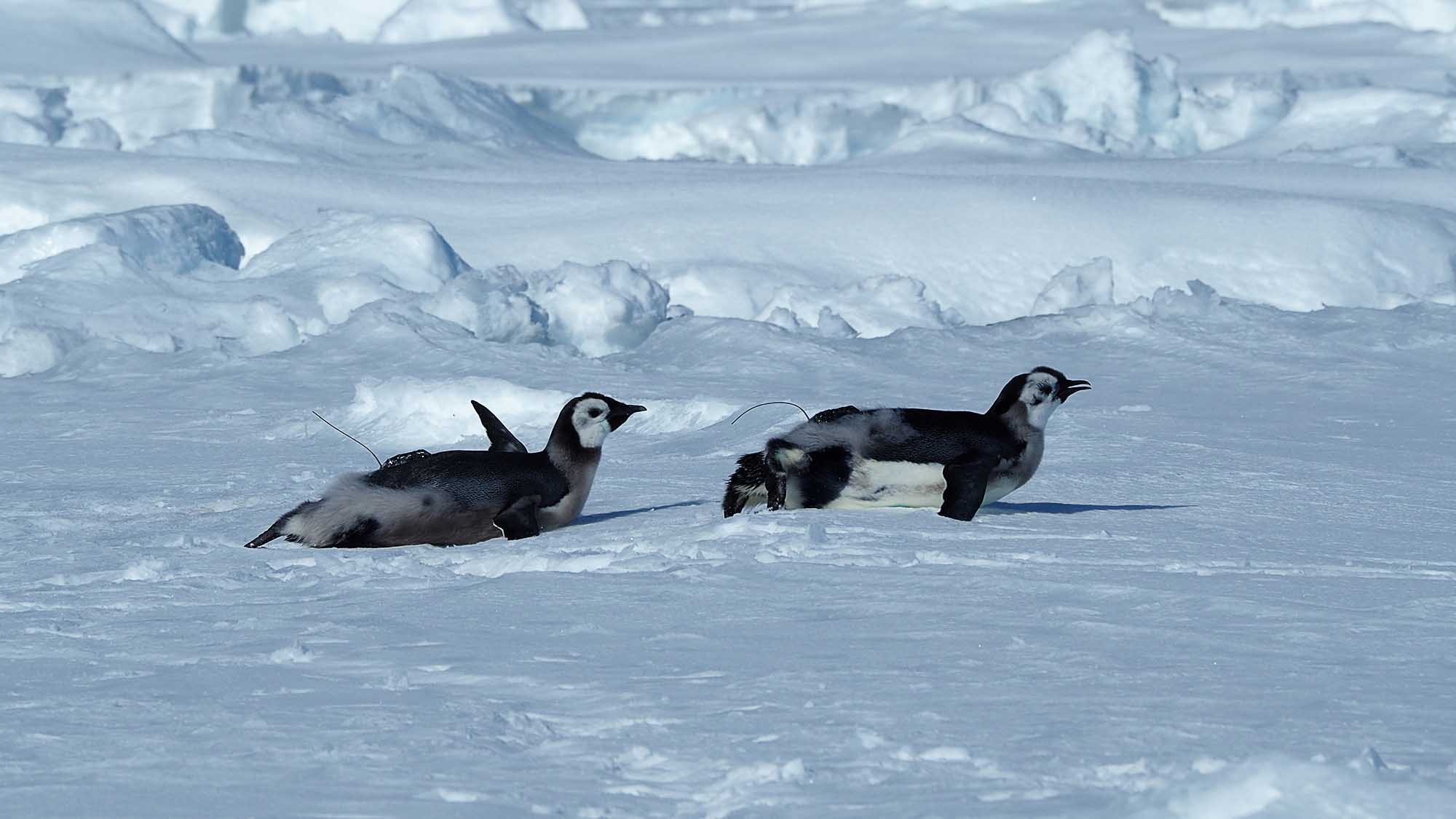Tracking of young emperor penguins in Antarctica has shown that they live about 373 miles further north than previously believed and stay far outside of their protected areas.
The Alfred Wegener Institute stated on Wednesday, 31st August, that emperor penguins from the Atka Bay iceport near Germany’s Neumayer Station III operated by the Helmholtz Center for Polar and Marine Research in Antarctica swim beyond the 50th parallel south in their first year of life.
Emperor penguins (Aptenodytes forsteri) which are the tallest and heaviest of all living penguin species and are endemic to Antarctica, represent the only penguin species that breeds during the Antarctic winter and live in colonies of up to several thousand individuals.
An international team of researchers led by Dr Aymeric Houstin from the Department of Polar Biology at the Scientific Centre of Monaco equipped eight young penguins with transmitters to monitor their movement through satellites about six times per day in January 2019.
The little ones – that hatched in the Atka Bay colony in the 2018 southern winter – were six months old when they were tagged.
The obtained results surprised the scientists as all young individuals stayed outside the Extent of Occurrence (EOO) defined by the International Union for Conservation of Nature (IUCN) during the Antarctic winter in August.
Some of the tagged penguins were reportedly observed about 1,260 kilometres (783 miles) away from the proposed preservation areas.
Comparison to other scientific studies showed that swimming areas of young emperor penguins are predominantly located outside of their protected areas.

(Alfred Wegener Institut, Celine Le Bohec/Newsflash)

(Alfred Wegener Institut, Aymeric Houstin/Newsflash)
According to the scientists, these findings indicated that the animals’ IUCN-defined EOO should be expanded to include the species’ current range, as existing marine protected areas (MPAs) were proved to be undersized, covering on average only 10 per cent of the estimated span.
In addition, the study showed that young emperor penguins stayed within the limits of the occurrence range for only about 10.6 per cent of their time in January, while in February and from July to November not a single penguin was within the boundaries of this protected area.
Newsflash obtained a statement from Dr Olaf Eisen – Scientific Director of the AWI Antarctic Research Infrastructures – in which he summarised the findings by saying: “Our data make it clear that strategic conservation plans for the emperor penguin and other long-lived, ecologically important species should take into account the dynamic habitat range of all age groups.”
The study titled “Juvenile emperor penguin range calls for extended conservation measures in the Southern Ocean” by Dr Aymeric Houstin and other experts was published in the Royal Society Open Science journal on Wednesday, 31 August, 2022.

(Alfred Wegener Institut, Celine Le Bohec/Newsflash)

(Alfred Wegener Institut, Celine Le Bohec/Newsflash)
To find out more about the author, editor or agency that supplied this story – please click below.
Story By: Georgina Jadikovska, Sub-Editor: Marija Stojkoska, Agency: Newsflash
The Ananova page is created by and dedicated to professional, independent freelance journalists. It is a place for us to showcase our work. When our news is sold to our media partners, we will include the link here.




